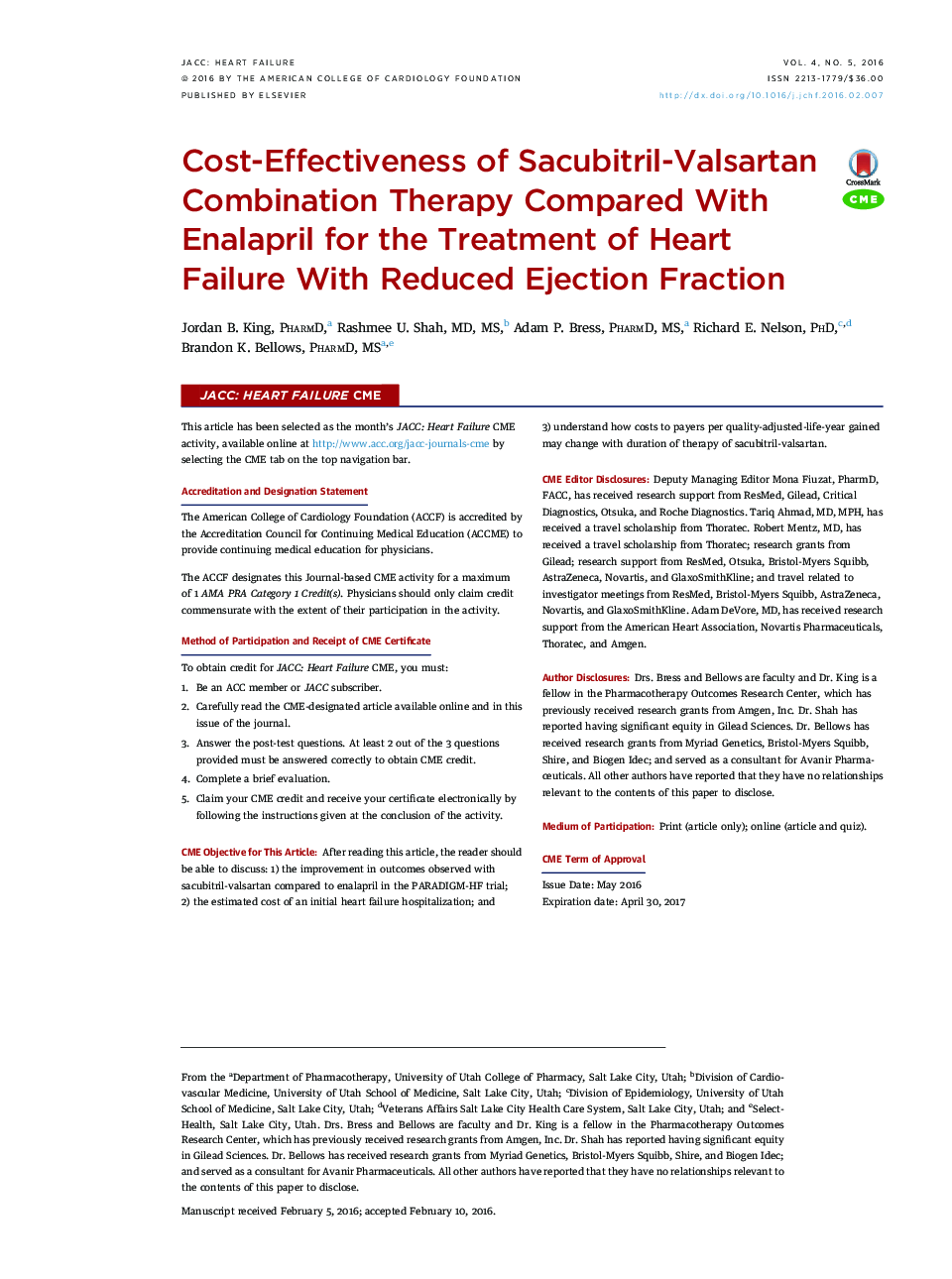| Article ID | Journal | Published Year | Pages | File Type |
|---|---|---|---|---|
| 2942394 | JACC: Heart Failure | 2016 | 11 Pages |
ObjectivesThe objective of this study was to determine the cost-effectiveness and cost per quality-adjusted life year (QALY) gained of sacubitril-valsartan relative to enalapril for treatment of heart failure with reduced ejection fraction (HFrEF).BackgroundCompared with enalapril, combination angiotensin receptor–neprilysin inhibition (ARNI), as is found in sacubitril-valsartan, reduces cardiovascular death and heart failure hospitalization rates in patients with HFrEF.MethodsUsing a Markov model, costs, effects, and cost-effectiveness were estimated for sacubitril-valsartan and enalapril therapies for the treatment of HFrEF. Patients were 60 years of age at model entry and were modeled over a lifetime (40 years) from a third-party payer perspective. Clinical probabilities were derived predominantly from PARADIGM-HF (Prospective Comparison of ARNI With ACEI to Determine Impact on Global Mortality and Morbidity in Heart Failure). All costs and effects were discounted at a 3% rate annually and are presented in 2015 U.S. dollars.ResultsIn the base case, sacubitril-valsartan, compared with enalapril, was more costly ($60,391 vs. $21,758) and more effective (6.49 vs. 5.74 QALYs) over a lifetime. The cost-effectiveness of sacubitril-valsartan was highly dependent on duration of treatment, ranging from $249,411 per QALY at 3 years to $50,959 per QALY gained over a lifetime.ConclusionsSacubitril-valsartan may be a cost-effective treatment option depending on the willingness-to-pay threshold. Future investigations should incorporate real-world evidence with sacubitril-valsartan to further inform decision making.
